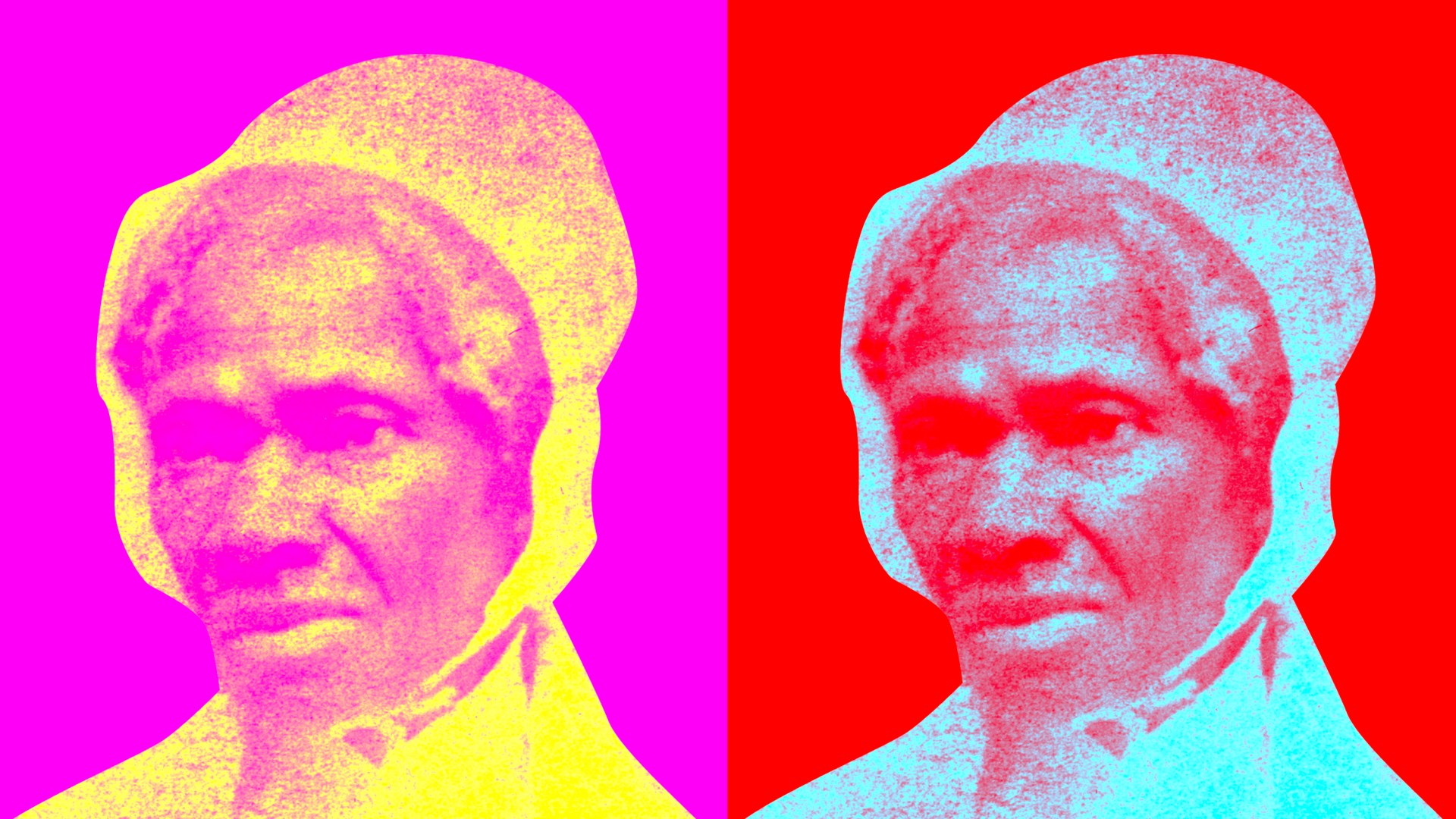In the most recent issue of The Atlantic, historian Clint Smith examines the life of an escaped slave named Josiah Henson. He asks, “Why weren’t American students being taught about Henson when they learned about [Harriet] Tubman, or assigned his autobiography alongside Frederick Douglass?”
The answer, according to Smith, is the moral complexity of Henson, a former plantation overseer turned abolitionist. “Not every enslaved person was Frederick Douglass,” he writes. “Not every enslaved person was Harriet Tubman. And even those two individuals, as celebrated as they are, were not the morally unadulterated characters that we sometimes make them out to be. Which is to say, they were human.”
I had a similar thought as I read Nancy Koester’s We Will Be Free: The Life and Faith of Sojourner Truth, a religious biography of a woman sometimes overshadowed by Harriet Tubman and Frederick Douglass in the pantheon of escaped slaves who helped free others from bondage. Truth’s story does not fit the conventional mold of a runaway slave. (In fact, she claimed she did not “run” away from her enslaver—she walked.) Nor did she always agree with Tubman and Douglass on issues of moral reform. Nor was she immune to some of the extreme religious views (and cults) that arose in her unique New York context.
Yet Truth was one of the most extraordinary Americans to ever live. Her complexity is precisely why she has so much to offer us today.
Salvation and reform
As we might expect from someone who renamed herself Sojourner Truth (she was born Isabella Baumfree), her life was a journey. As Koester explains, “For the rest of her life” after becoming a Christian, “Sojourner lived into her name.” Truth could not divorce her work as a reformer from her faith in Jesus Christ. As a result, her commitment was to something much larger than any person or movement. After she left her old life behind, the Lord gave her a new name, Truth, “because I was to declare the truth to the people.” And so she did—to nearly everyone she met. For nearly half a century, she championed Black and women’s rights. And at times, she even challenged Black and women’s rights advocates.
Truth drew no lines between her freedom from slavery and her freedom from sin. One can see why. Technically speaking, she never freed herself from bondage. She was redeemed. Once she was caught by her enslaver, a Dutch Reformed couple offered to pay off the remaining work she supposedly owed the man. For the first time in her life, Truth heard someone say that God alone is Master.
Months later, she met her Master. On a New York back road in 1827, Truth experienced a blaze of light and felt that God was looking straight into her soul. With a “mass of lies” exposed in her darkened heart, she felt so much “vileness” and shame that she could not utter a word. Suddenly, “a friend” shielded her from the intense light, preventing her from being scorched to death. “It is Jesus,” a voice said.
A wave of love overcame her, compelling her to preach. “Lord, I can love even white folks!” she exclaimed with joy. From that moment forward, Truth’s abolitionism would be fueled not by hate or self-interest but by the love with which Jesus “had always loved her.” When she changed her name years later, she explained, “The Lord gave me Sojourner, because I was to travel up an’ down the land, showing the people their sins, and being a sign unto them.” One of the strengths of Koester’s book is how it illustrates the spiritual nature of Truth’s abolitionism, as she “saw her experience in slavery as part of a bigger story, an ongoing spiritual journey.” Salvation and reform went hand in hand.
Anyone who ever laid eyes on Sojourner Truth would have instantly known she was not your average 19th-century woman of color. Standing at just under six feet, with a voice that rivaled any public speaker in America, the Dutch- and English-speaking Truth was an imposing figure who enjoyed smoking a pipe almost as much as she loved singing hymns, spirituals, and antislavery songs.
Once sold as a child at auction for $100 along with a flock of sheep, she became a female preacher in a male-dominated world. Amazingly, Truth exhibited such strength and versatility as a speaker and defied so many stereotypes for women of that era that white men publicly doubted whether she was a woman at all. (While speaking in Indiana in 1858, a crowd of hecklers demanded she bare her breast to prove her womanhood.) To a hissing proslavery crowd, she once charged, “It seems that it takes my Black face to bring out your black hearts, so it’s well I came. You are afraid of my Black face, because it is a looking-glass in which you see yourselves.”
But Truth wanted more than racial or gender equality. According to a reporter, during her speech at the first National Women’s Rights Convention in 1850, she prayed, “God, make me a double woman, so that I might hold out to the end.” The woman known for her theological satire and quick wit believed that the Lord was her strength, not her voice. As Koester notes, she was indeed a “double woman,” standing for both women’s rights and abolition.
Still, Truth was a “double woman” in another regard. She spoke to both sides of the racial and gender divide, and her adamant convictions could puncture friends and foes alike. The woman known for lampooning proslavery mobs and allegedly shouting “Ain’t I a woman?” to a crowd in Akron, Ohio, in 1863 could be just as bold and unequivocal around those in her own camp.
In what has since become known as the “Great Interruption” in Salem, Ohio, in 1852, fellow lecturer Frederick Douglass urged that “violence … in some circumstances [is] far more potent than Moral Suasion.” He fumed, “What is the use of Moral Suasion to a people thus trampled in the dust?” Douglass wanted war. After a few seconds of silence passed for effect, the booming voice of Sojourner Truth shot back from the crowd, “Is God gone?” If there was a God in heaven, she believed, there was no need for violence.
Truth aligned herself with Douglass in opposition to slavery, but she would not tolerate his warmongering. As David Blight has shown in his Pulitzer Prize–winning biography, Douglass emulated Old Testament prophets like Isaiah and Jeremiah far more than he did Christ himself. Consequently, his speeches did not carry the same message of peacemaking and forgiveness as those of Truth, who told her audiences to imagine “the poor slave in heaven … robes washed white in the blood of the Lamb.”
These differing visions of America created friction within the abolitionist ranks. Truth’s question was later quoted as “Is God dead?” and popularized by Harriet Beecher Stowe (whose religious biography was also written by Koester). Douglass never forgot the encounter, writing in 1870, “Let him who is foolhardy enough to cross her beware.”
An abiding name
In fact, Truth stood her ground on many occasions against abolitionists, women’s rights advocates, and even her own freedmen and freedwomen. She called no man (or woman) master. When Harriet Tubman, the so-called “Moses of her people,” told Truth that she did not trust Abraham Lincoln to achieve emancipation, Truth counseled patience and told Tubman that she saw Lincoln as a friend of the slaves.
After the Civil War, she scandalized many of her African American listeners by telling them that it was a “disgrace” to be content to live “off the government.” Truth even experienced friction with Susan B. Anthony and Elizabeth Cady Stanton when both suffragists insisted that white women should get the vote before Black men.
Reform movements in America have rarely proven monolithic, and Truth knew this firsthand. Thankfully, she also knew the transformative power and peace of the saving gospel, and this enabled her to both love her worst enemies and rebuke her good friends. It also propelled her entire career as a reformer. Truth never relinquished her impulse toward reform, campaigning for the prohibition of alcohol to temperance societies in the 1870s.
She lived up to her name, sojourning upon the earth in the name of Christ even as she lived in poverty in Michigan into the 1880s. As she once said to the Lord after leaving “Egypt,” a byword for her past life in the house of bondage, “Thou art my last Master, and Thy name is Truth, and Truth shall be my abiding name until I die.”
Obbie Tyler Todd is pastor of Third Baptist Church in Marion, Illinois, and an adjunct professor of church history at New Orleans Baptist Theological Seminary.








